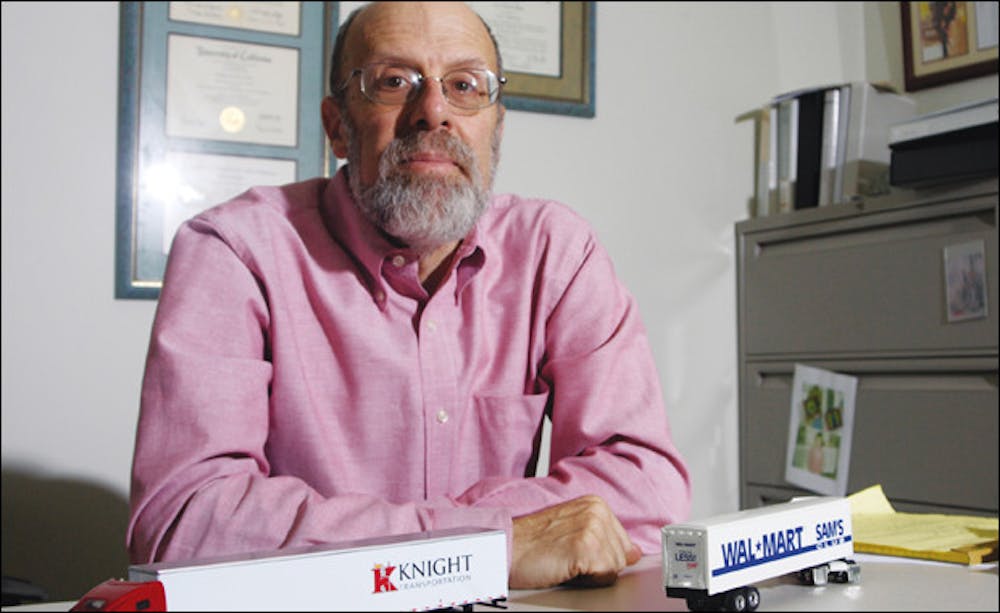A joint effort between two ASU schools and a private spin-off of the University aims to improve the efficiency and safety of trucking between the United States and Mexico.
With a grant of more than $500,000 from the Federal Motor Carrier Safety Administration, ASU is working in conjunction with constructNet International Inc., a private company with ties to ASU, to develop an English training program for Mexican truck drivers and a test for drivers at the border to ensure proficiency in English.
There are about 100 Mexican trucks currently operating in the U.S., and it is important to make sure that drivers are properly trained in English, said professor Arnold Maltz of the W. P. Carey School of Business.
“The issue … is under federal regulations, any truck driver operating in the U.S. has to have enough command of the English language to operate safely,” he said. “[We want to] bring their language skills up to the point where they can operate safely in the U.S.”
Maltz is part of the partnership — which includes the business school, the College of Design and Phoenix-based constructNet International — that’s working to develop the English education and testing products.
Maltz said he is hoping to have the course and test available by next summer.
Currently, a pilot program is in place to allow Mexican truckers to move into the country freely over the border — a program the House of Representatives voted to eliminate, Maltz said. The legislation — HR 6630 — is now in the U.S. Senate, and its future is unclear, he added.
Regardless of the bill’s outcome, Maltz said the need for an efficient means of training drivers in English and the implementation of a border test for language proficiency will be in high demand, he said.
There is not a significant difference between the accident rates of American and Mexican truckers, Maltz said.
“It only makes sense, because the Mexican companies are not likely to send a piece of equipment into the U.S. and have it stranded there,” he said.
Lupe Carbajal, chief executive of constructNet International, said there is demand across the country to teach English to laborers with a different first language.
The company, founded in 2005, provides English instruction to workers in the construction industry — about 3 million of whoom are Hispanic, Carbajal said.
He said constructNet International is currently providing Spanish translation and other services for the product development and is prepared to market, host and support the English courses when the product is completed.
The vast majority of Hispanic and other non-English speakers want to learn English, and the new teaching product will provide a simple and effective way for truckers to learn the language, Carbajal said.
And America’s economy demands workers are fluent in English, he said.
“There are lots of community colleges, community organizations offering [English education],” he said. “But they can’t fill the demand.”
Reach the reporter at matt.culbertson@asu.edu.




